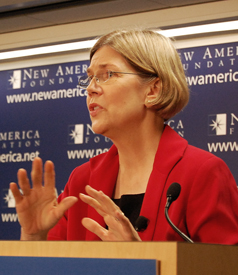Three recent reports offer contradictory messages about women and finance. Taken together, they suggest that women’s greater financial awareness following the recent recession will take them only part way to greater solvency.
For the past decade, the financial industry has puzzled over the gap between women’s desire to take charge of their finances and their lack of success in translating that to their economic bottom lines.
In 2000, Prudential launched what has become a biennial study, Financial Experience & Behaviors Among Women. That same year, Citi held a conference to discuss women and finance, resulting in Women & Co., a “vehicle for insightful women to discuss their financial realities.” Women arguably require better financial planning than men, since they live longer and earn less, yet women face unique barriers to saving for retirement. Heightened financial awareness among women, Citi and Prudential believed, would solve this problem.
Ten years later, Women & Co.’s report Women and Affluence 2010: The Era of Financial Responsibility has optimistically announced the arrival of the “SHE-conomy,” finding that women “feel significantly more knowledgeable about finances and investing than they did pre-recession.” Prudential’s tenth-anniversary study heralds “steady progress in women becoming more aware, engaged, and actively involved in their finances,” with 95 percent of women now categorized as “financial decision-makers.” Despite this new involvement, the majority of women are behind in their retirement planning. The women Prudential surveyed remain confused about financial products, with 38 percent not understanding stocks, 43 percent not understanding mutual funds, and 53 percent failing to understand annuities.
Overall, the two studies imply that women, though they have more to learn, are headed toward healthy financial involvement. The remaining obstacles are still largely issues of understanding, from the purpose of annuities to the need to save first for retirement before saving for kids’ college educations.
While this increased financial involvement is encouraging, it is tempered by the findings of a third study. As Latoya Peterson reported for WMC in May, wealth accumulation—the buildup of assets over time—is critical to long-term financial stability. The Women & Co. study covered women with $100,000 or more in assets. Of the women Prudential surveyed, 75 percent also had savings and assets exceeding $100,000, and all earned over $50,000 a year. The study Peterson described, the Insight Center for Community Economic Development’s “Lifting as We Climb: Women of Color, Wealth, and America’s Future,” found that black women had a median wealth of just $100.
The first two studies can only claim an improvement in financial planning for the wealthier half of women, as Heidi Hartmann, president of the Institute for Women’s Policy Research, pointed out at a panel discussion at New York’s Paley Center [see “Prudential Study Featured at SheSource Event”]. “When we see anything in this [Prudential] survey that’s negative,” said Hartmann, “imagine what it’s like for the women in the bottom half of the income distribution. Those women are even more disadvantaged in the information they have and the information they need.”
Hartmann focused on overly complicated financial products as an explanation for what the Prudential study described as a “confidence gap.” This gap is the distance between women’s increased knowledge of and involvement in their finances, and the belief still retained by 82 percent of the women surveyed that they need some or a lot of help in making smart financial decisions. “Money Coach” Lynette Khalfani-Cox, also on the panel, pointed to the work of Elizabeth Warren, the front runner as President Obama’s nominee to head the new Consumer Financial Protection Bureau, as a potential step forward.
Warren has gained respect for her prescient calls for reform and her analysis of credit issues through their effects on families, rather than their benefits for the financial industry. Saying she’d like to see two-page consumer agreements, Warren “has talked about streamlining the process, about clarity in disclosure, about creating very straightforward language in financial contracts,” explained Khalfani-Cox. While educational solutions, such as those launched ten years ago, might reach only a select group, simplifying financial products would affect all women.
At the WMC SheSource luncheon following the Prudential press release, Trish Regan, anchor of CNBC’s show covering Wall Street, The Call, told how a story she reported brought home to her the underrepresentation of women in the financial world. During the swine flu panic, Regan, who was pregnant at the time, broke the story that Wall Street had all of the vaccines, while at-risk children and pregnant women went without. As a rare pregnant woman standing in the NYSE, she realized she was reporting an issue that others would easily overlook. Simple demographic diversity on the trading floor, Regan’s story illustrates, can alert policymakers to problems that might otherwise go unnoticed.
Regan closed her keynote speech with one last call to “foster and encourage young women to be successful in their careers and to be successful with their money—to know that it’s important to save, that it’s important to plan, to know that it’s important to invest—these are values that as women we need to embrace.” Prudential’s biennial study suggests that when the financial industry focuses on gender disparities, it can go a long way toward correcting them. It’s a promising start that emphasizes the need for greater examination of a broader demographic.
Join us in defending the truth before it’s too late
The future of independent journalism is uncertain, and the consequences of losing it are too grave to ignore. To ensure Truthout remains safe, strong, and free, we need to raise $46,000 in the next 7 days. Every dollar raised goes directly toward the costs of producing news you can trust.
Please give what you can — because by supporting us with a tax-deductible donation, you’re not just preserving a source of news, you’re helping to safeguard what’s left of our democracy.
